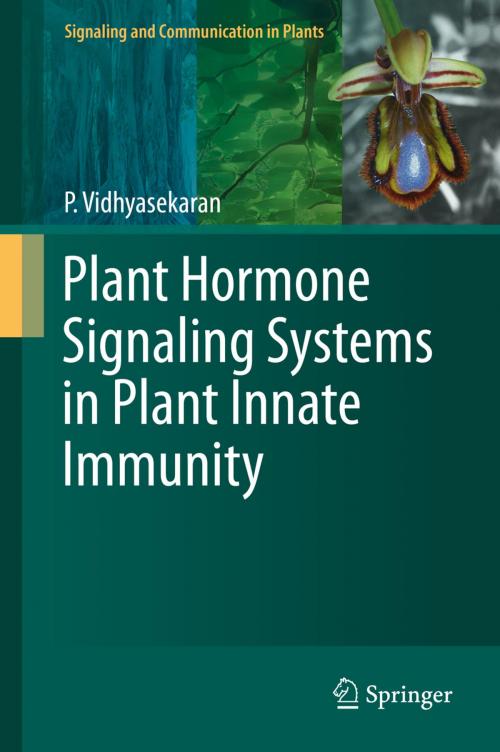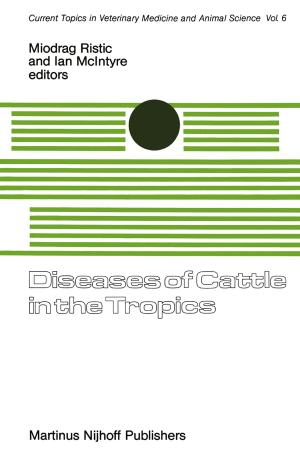Plant Hormone Signaling Systems in Plant Innate Immunity
Nonfiction, Science & Nature, Science, Biological Sciences, Microbiology, Botany| Author: | P. Vidhyasekaran | ISBN: | 9789401792851 |
| Publisher: | Springer Netherlands | Publication: | October 1, 2014 |
| Imprint: | Springer | Language: | English |
| Author: | P. Vidhyasekaran |
| ISBN: | 9789401792851 |
| Publisher: | Springer Netherlands |
| Publication: | October 1, 2014 |
| Imprint: | Springer |
| Language: | English |
Plants are endowed with innate immune system, which acts as a surveillance system against possible attack by pathogens. Plant innate immune systems have high potential to fight against viral, bacterial, oomycete and fungal pathogens and protect the crop plants against wide range of diseases. However, the innate immune system is a sleeping system in unstressed healthy plants. Fast and strong activation of the plant immune responses aids the host plants to win the war against the pathogens. Plant hormone signaling systems including salicylate (SA), jasmonate (JA), ethylene (ET), abscisic acid (ABA), auxins, cytokinins, gibberellins and brassinosteroids signaling systems play a key role in activation of the sleeping immune systems. Suppression or induction of specific hormone signaling systems may result in disease development or disease resistance. Specific signaling pathway has to be activated to confer resistance against specific pathogen in a particular host. Two forms of induced resistance, systemic acquired resistance (SAR) and induced systemic resistance (ISR), have been recognized based on the induction of specific hormone signaling systems. Specific hormone signaling system determines the outcome of plant-pathogen interactions, culminating in disease development or disease resistance. Susceptibility or resistance against a particular pathogen is determined by the action of the signaling network. The disease outcome is often determined by complex network of interactions among multiple hormone signaling pathways. Manipulation of the complex hormone signaling systems and fine tuning the hormone signaling events would help in management of various crop diseases. The purpose of the book is to critically examine the potential methods to manipulate the multiple plant hormone signaling systems to aid the host plants to win the battle against pathogens.
Plants are endowed with innate immune system, which acts as a surveillance system against possible attack by pathogens. Plant innate immune systems have high potential to fight against viral, bacterial, oomycete and fungal pathogens and protect the crop plants against wide range of diseases. However, the innate immune system is a sleeping system in unstressed healthy plants. Fast and strong activation of the plant immune responses aids the host plants to win the war against the pathogens. Plant hormone signaling systems including salicylate (SA), jasmonate (JA), ethylene (ET), abscisic acid (ABA), auxins, cytokinins, gibberellins and brassinosteroids signaling systems play a key role in activation of the sleeping immune systems. Suppression or induction of specific hormone signaling systems may result in disease development or disease resistance. Specific signaling pathway has to be activated to confer resistance against specific pathogen in a particular host. Two forms of induced resistance, systemic acquired resistance (SAR) and induced systemic resistance (ISR), have been recognized based on the induction of specific hormone signaling systems. Specific hormone signaling system determines the outcome of plant-pathogen interactions, culminating in disease development or disease resistance. Susceptibility or resistance against a particular pathogen is determined by the action of the signaling network. The disease outcome is often determined by complex network of interactions among multiple hormone signaling pathways. Manipulation of the complex hormone signaling systems and fine tuning the hormone signaling events would help in management of various crop diseases. The purpose of the book is to critically examine the potential methods to manipulate the multiple plant hormone signaling systems to aid the host plants to win the battle against pathogens.















